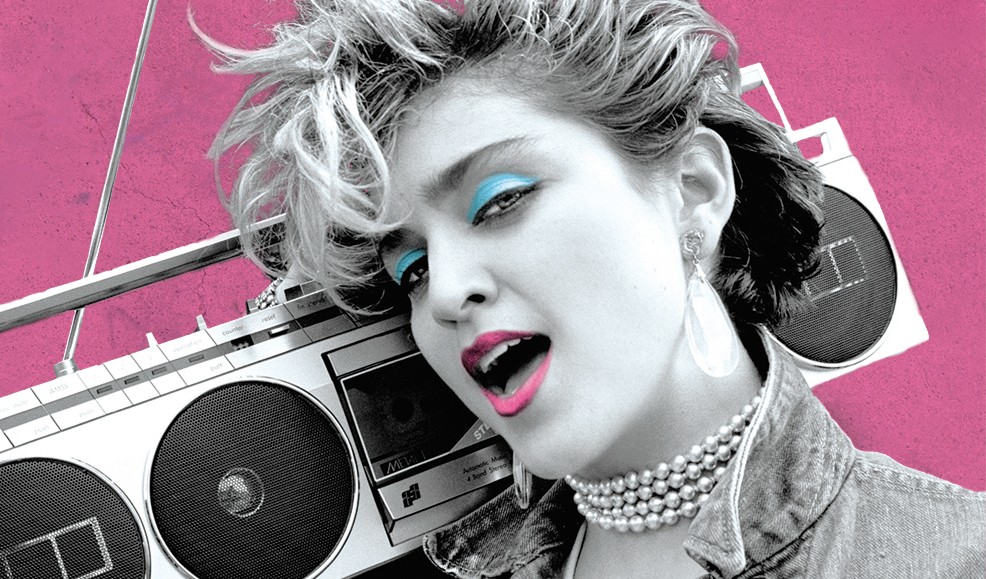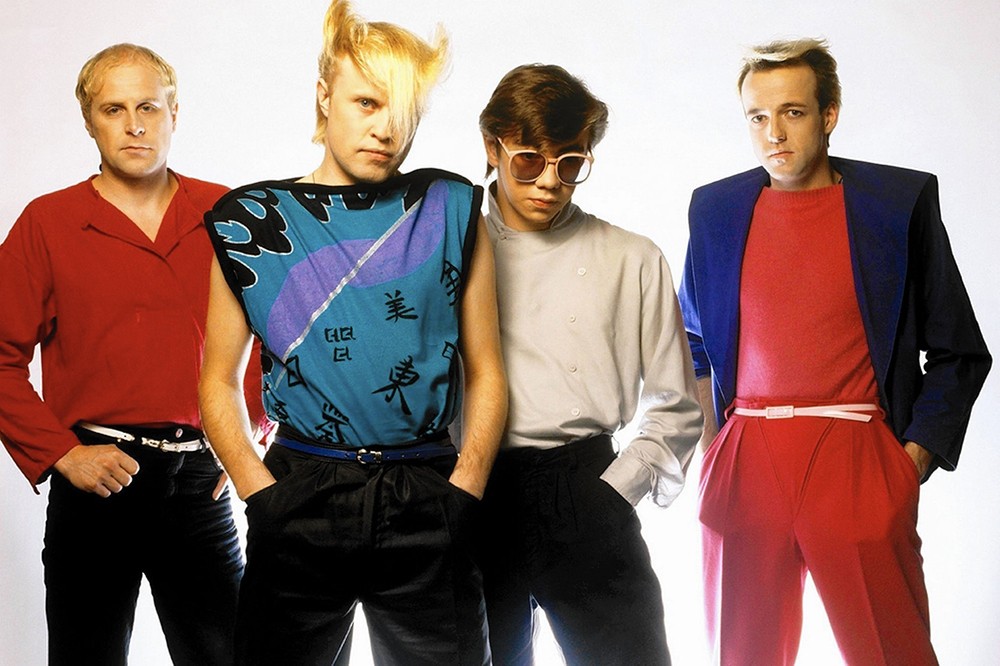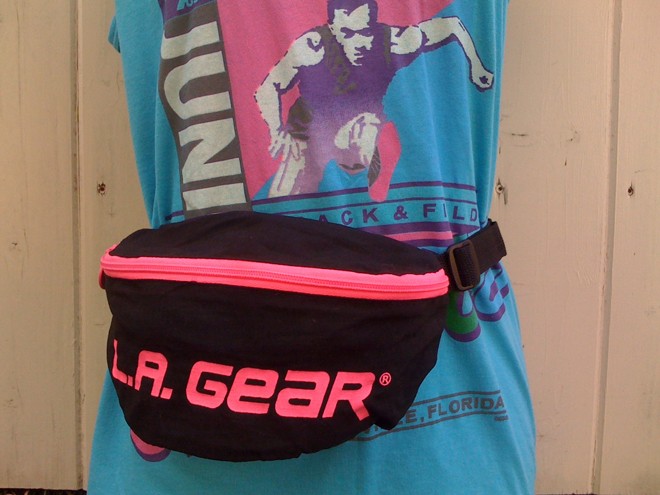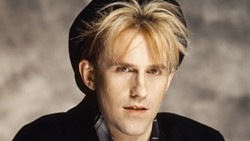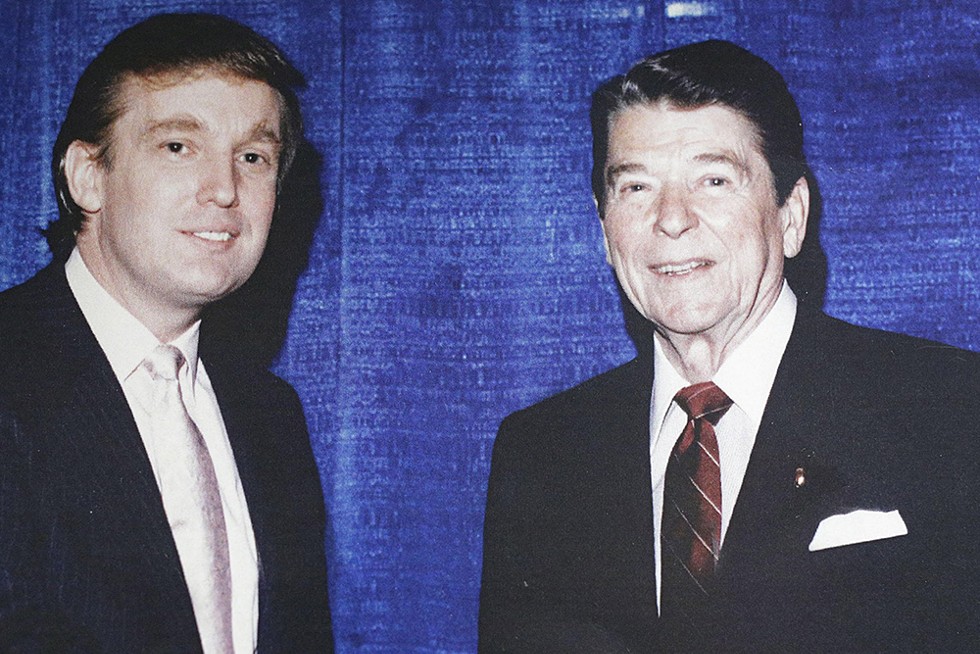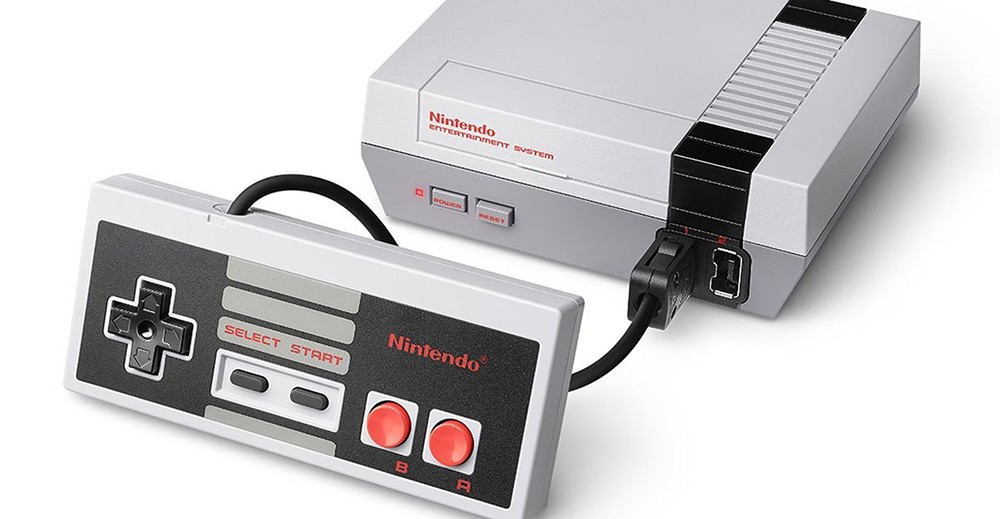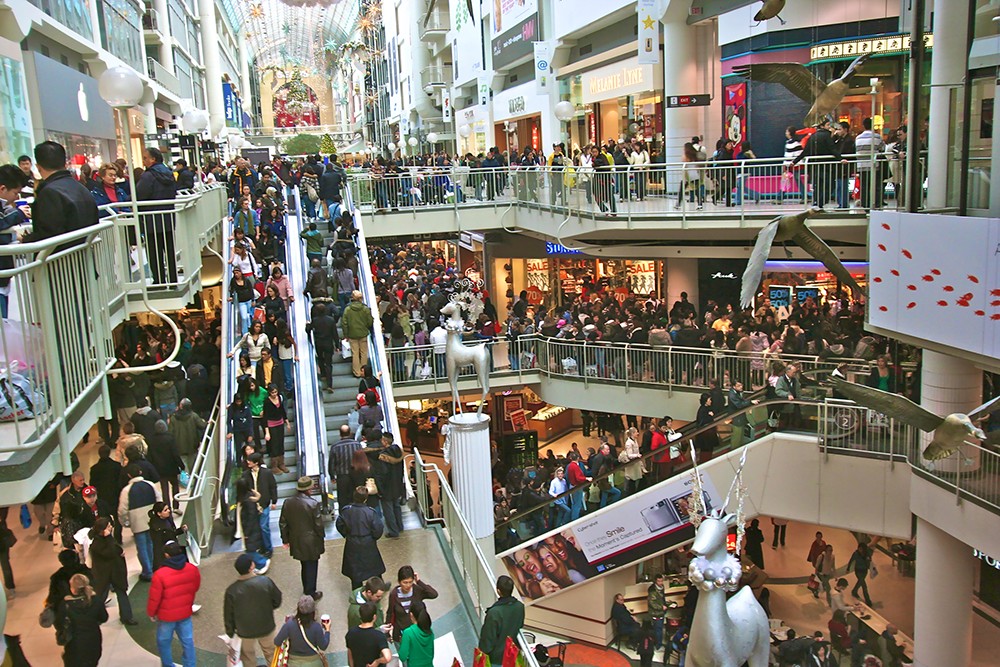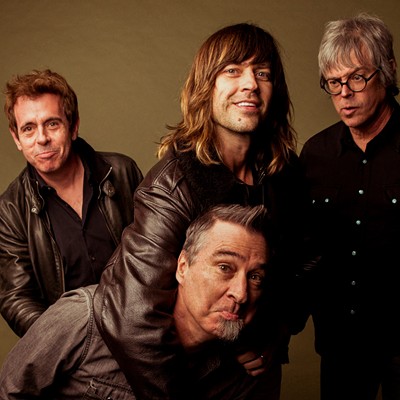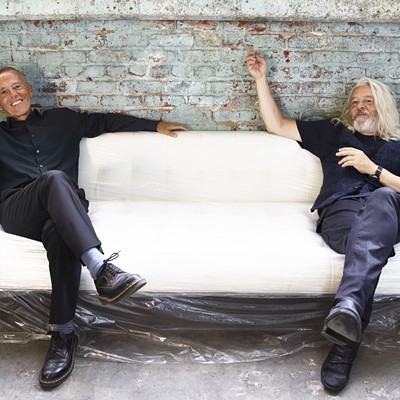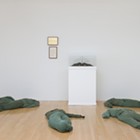I'm standing thigh-deep in a wave pool at the Mandalay Bay Resort's fake beach in Las Vegas, nursing a $9 Bud Light alongside revelers dressed in clashing beachwear or '80s-centric period costumes — bandanas, shredded jeans, Madonna-style bustiers. It's after 10 pm, but still hotter than 100 degrees on a mid-September night.
An oddball array of Reagan-era one-hit wonders and blink-and-you-missed-them bands parade across the stage — also located in the pool, several feet over our heads — knocking out short performances. I mean really short. Just two or three songs each, and only the hits.
Bow Wow Wow wants some candy.
Wang Chung is having fun tonight.
Tommy Tutone has Jenny's number and he's telling us about it, and Flock of Seagulls are running oh-so-far away, but not until they've closed down this nearly four-hour, eight-act edition of Lost '80s Live, a retro tour catering to middle-aged music fans trying to relive the past and younger folks drawn to the combination of high-energy music and campy fashions they might have gleaned from their parents' high school yearbooks, or maybe from catching The Goldbergs or Stranger Things as of late.
Nearly every act calls the crowd "'80s people" at one point or another, and and I overhear a couple of 40-somethings at the bar compare frustrations at their inability to get a decent snooze earlier in the day.
"How was your nap?"
"I didn't sleep at all."
"Did you at least lie down?"
I can totally relate. Lacking a DeLorean at 88 mph to go see these musicians in their proper historical context, I hopped a flight out of Spokane a couple of hours earlier to see if America is as obsessed with the 1980s as it seems to be — and why. I'm a child of that era, and my adolescent and teen years — for whatever reason — just... Won't. Go. Away.
Leg warmers and fanny packs — they're back! Ghostbusters and Footloose movie remakes hit theaters the past couple of years, and Madonna had one of the highest-grossing tours of the past year. A real-life version of Michael Douglas' "greed is good" Wall Street character was just elected president.
At some points during this Lost '80s Live concert, I was enjoying the communal vibe of Generation Xers dancing to our Golden Oldies. At others, the show felt like the most vacuous "entertainment" anyone's paid for outside of a Kardashian app. Which is pretty much how I remember much of the '80s — glitz and glamour, loud music and loud colors, signifying... well, that's hard to say.
For a long time, the '80s were mocked for their garish fashions, superficial pop music and preening, heavily hair-sprayed celebrities. But the '80s have stuck around in the public consciousness ever since they ended; they're now seen mostly in a positive light, as a fun, more innocent era. Determined to understand why, I strolled through malls and hung around concert halls, bars and casinos. I called up professors who've actually studied the phenomenon. I even hit the books.
The answers, it turns out, don't come easily.
SIGN O' THE TIMES
A couple of years before I moved to Spokane, I took my then-adolescent nephew to see the Spokane-set (but Michigan-filmed) remake of Red Dawn in hopes that he'd find the 2012 version as classic as I found the 1984 Cold War original. He did not, and neither did I, or most of America.
I was born when Richard Nixon was president, was a toddler under Jimmy Carter and hit my teen years when the so-called Reagan Revolution and the nascent MTV were in full blossom. I'm the ideal target for the Nostalgia-Industrial Complex, the machine pumping out recycled versions of '80s entertainment and fashion. I'm perfectly happy to go see a new version of an old movie to see how it compares to the original — I might be one of the few who enjoyed this summer's Ghostbusters, even if it obviously can't match the 1984 original — and continue the uneasy wait until someone desecrates the John Hughes canon. I buy remastered versions of R.E.M.'s old albums and tickets to '80s punk-band reunion tours from Black Flag to Pixies to, just this week, X in Seattle. (My fashion sense remains that of an early '90s grunge slacker; no neon on this guy).
It should come as no surprise that, in 2016, a big reason for the omnipresent '80s is money. Many who grew up in the decade are now adults with some disposable income, or running the companies that decide things like, "You know, there's a market for a Dirty Dancing remake," or "A new Nintendo that looks like the old Nintendo will sell like crazy."
The Inland Northwest, like the rest of the country, is not immune. Everywhere I go, the '80s are in my face, or in my ears. I go to Trader Joe's or Yoke's and hear a steady diet of '80s tunes from INXS or Madonna, who famously appeared in 1985's Vision Quest in Spokane. I play the occasional game of Pac-Man (originally released in 1980) at Gamers, a bar full of old arcade games that opened downtown this year. I've joined music fans at more than our fair share of concerts by acts who enjoyed their commercial height when spandex and "keytars" were de rigueur. Our summer concert season was packed with the likes of the English Beat, Berlin and Duran Duran, and this weekend there's a hair-metal festival filling Spokane Arena with bands like RATT and Dokken that my friends and I would have loved to see 30 years ago.
As the director of entertainment at Northern Quest Resort & Casino, Justin Kobluk books the concerts that come to the Airway Heights venue. He's also a Spokane native who graduated from Ferris High School in 1985 and spent some of his high school years working at the old Spokane Coliseum, aka the "Boone Street Barn." In the three years since he returned to Spokane after 30 years away and started booking at Northern Quest, he's brought in bands like Culture Club, New Edition, Loverboy and Whitesnake.
"You can go to a show that you went to in high school, and you can relive that," Kobluk says. "Not relive high school, but relive the feelings and the fun and the energy that maybe has been missing from your life because of your job and your family commitments."
Still, he's not booking those '80s acts just because of his own fond memories.
"I look at shows and concerts and tours, it's a commodity," Kobluk says. "I'm buying a show or presenting a show because I know it's going to draw X."
People go see the bands from their youth, he says, because "you connect with that fun you had in the '80s."
The '80s have a grip on modern Hollywood as well, and it's not just in the remakes of '80s movies hitting the multiplex or rebirth of TV shows like Full(er) House on Netflix. Dr. Drew Ayers, who teaches film history at Eastern Washington University, says the era represented a seismic shift at movie studios from the quality of '70s films into more calculated money grabs, spearheaded by the multinational corporations who bought up Hollywood studios in the '80s.
"The '80s are really viewed as corporate cinema," Ayers says, "marked not necessarily by quality, but for the rise of the blockbuster. "Synergy" is the other word, where you make a movie like Footloose, and it's the soundtrack that moves the movie. Later on, it's the Happy Meals or the T-shirts or rides at Disney World, where it's not just about the film."
While soundtracks might not sell like they used to, Ayers contends that modern studio efforts to make new movie franchises goes back directly to the '80s; hence the Marvel Universe or renewed Star Wars series. And he attributes the bevy of '80s film remakes to the fact that people who grew up in the era are now writing, directing and green-lighting movies.
"There's this logic that 'We know it worked before, and there's at least a core audience that will go see it,'" Ayers says. "There's a nostalgia for the '80s, and the reason it's so powerful for us is that we were kids. When you're 10, the world is great and amazing and you have nostalgia for that. If you were an adult in the '80s, you probably had nostalgia for the '50s."
THINGS CAN ONLY GET BETTER
Ann Ciasullo was an '80s kid who grew up in Spokane, cruising Riverside with her friends, seeing movies like Sixteen Candles at the long-gone Riverpark Cinemas and shopping at stores like the Crescent and Rick's Classic Rags downtown. She also had to watch her older sister go to all the concerts at the old Spokane Coliseum — Loverboy, Judas Priest, Iron Maiden — that she was a little too young to go to herself.
She's also a Ph.D. and professor in Gonzaga's English department who specializes in popular culture. Ciasullo's research for a paper published in a book about the "narratives of nostalgia" in Mad Men shows nostalgia for past eras to be a multifaceted phenomenon.
"The interesting part of nostalgia is always that sense of yearning that can never be fulfilled, and that there's some kind of pain inherent in it," Ciasullo says. "Which I think is true, and yet we revel in it at the same time. At least that's my relationship with the '80s, especially growing up in Spokane."
There's a tendency to think of the nostalgia-obsessed as a sad lot, people stuck in the past, unwilling to face the future, and incapable of truly living in the now — feeling that pain Ciasullo mentioned. Not that long ago, nostalgia was considered a type of mental illness.
That idea has evolved, however, to the point that a study led by social psychologist Dr. Wing-Yee Cheung and published in 2013 suggests that nostalgia actually helps people see their future more optimistically.
Nostalgia, Cheung and her co-authors write in Back to the Future: Nostalgia Increases Optimism, was "long considered a doomed state of mind" and "an escapist reaction to the demands of the present and an anxiety toward the future." Through a series of studies, the authors found a different outlook.
"Nostalgia fosters social connectedness," they write, "which subsequently increases self-esteem, which then boosts optimism. The nostalgic experience is inherently optimistic and paints a subsequently rosier future."
There is something about the '80s that makes nostalgia for them different than, say, the '70s-era Happy Days nostalgia for the '50s or love of all things '60s/hippie-oriented, Ciasullo says.
"Nostalgia always has in it an exaggeration of past attributes," Ciasullo says. "What I think makes the '80s attractive is they were already exaggerated. So the nostalgia's on steroids ... It was sort of Technicolor. It was loud and obnoxious to begin with."
Ciasullo isn't immune to '80s nostalgia herself. This year, she's hit a few shows by favorites from her teen years, and was particularly excited about seeing Loverboy decades after her sister did. I was at the Loverboy show, too, as a bit of a lark, having never seen the band in its heyday, but remembering MTV clips full of video vixens that were very... influential to an adolescent boy at the time.
Clearly, Ciasullo was there for a more spiritually and musically pure experience than I was.
"At one point everyone is singing 'Working for the Weekend,' and I'm in the second row," Ciasullo says. "I turn around and everyone is doing the same thing. And I realized — and I know the word 'profound' and Loverboy in the same sentence is weird — but I thought, 'This is something.' We all had some sort of experience of what this band meant to us."
ROCK THIS TOWN
Howard Jones was a distant memory from one of my first concerts in high school, when I joined roughly 20,000 people on a Utah mountainside watching him play stacks of synthesizers while a mime sidekick danced around the stage. (Yes, a mime. In chains. It was a strange time.) Jones was a synth-pop pioneer who had several huge hits in the '80s ("No One Is to Blame," "New Song"), but not many since.
While I'd mostly forgotten Jones as someone who (unfairly) represented many things I despise — synthesizers, mimes — others continued listening, and he still headlines shows where he might do some new compositions, and often plays big '80s festivals, even the occasional '80s cruise, delivering his old hits.
I called Jones while he was touring the States this summer with Orchestral Manoeuvres in the Dark and Barenaked Ladies, and he couldn't have been nicer, or more eloquent in his defense of the '80s and its music and fashion.
"The '80s was a departure from the '60s and '70s," Jones says. "We had videos to use, so visuals were important. Style and fashion were incorporated into the whole thing. There was a lot of different genres coexisting at the same time. There was heavy rock, there was indie rock, there was electronic, there was pop. It was all happening at the same time, and to be dismissive of that music is to be dismissive of a generation of people."
Duran Duran has continued to make new albums since the band's '80s heyday, most of them earning critical acclaim if not the same commercial response from their days selling millions of records, along with posters, concert tickets and T-shirts. Drummer Roger Taylor says he appreciates that the band has a long history to draw on, but its setlist in Spokane nevertheless relied on its MTV hits of 30-plus years ago.
"I think people think of the '80s when they think of us, but I don't think we're purely defined by the '80s," Taylor says.
No one really wants to be defined by the '80s. But Rob Juarez might be the closest you can find. Juarez built the Lost '80s Live tour that I took in down in Vegas based on the idea that people want to recapture the feeling they had the first time they went to a concert. In his own case, it was to see Thompson Twins, Flock of Seagulls and OMD at the Hollywood Bowl, an event that led to him working at an '80s-era radio station, becoming a musician and producing concerts dedicated to the bands he grew up loving.
"I remember sitting there, and I was moved," says Juarez. "I wanted to create something that brings back a lot of memories and a lot of emotions, when time was simpler. When we didn't have kids and we didn't have a mortgage. Things were good."
Juarez got the idea of an '80s tour 16 years ago when he helped organize a one-off concert of '80s bands called "Synth-Stock" — and 9,000 people showed up.
"The '80s are important to me. I'll admit I make a living off them," Juarez says. "The '80s were good. It was pure. The music was romantic. There was all the dreams and hopes of a young man or a young woman and what they wanted to be."
At his shows and those '80s gigs in Spokane, they can be teenagers again.
But is that a good thing?
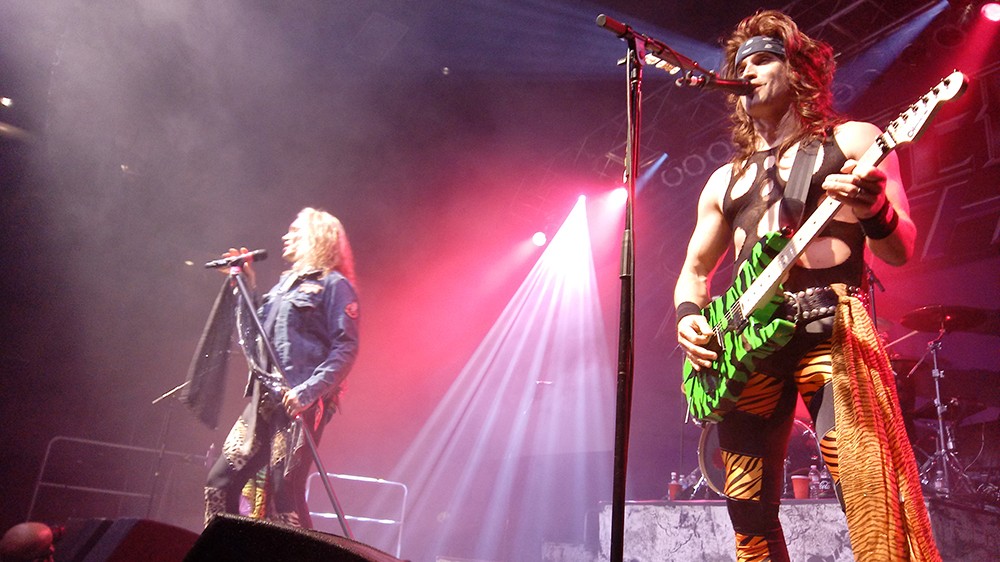
LOVIN' EVERY MINUTE OF IT
It's mid-afternoon on a Thursday and my curiosity has taken me to a Spokane Valley bar on a warmer-than-typical November day. A few hours later, Steel Panther headlines the Knitting Factory for the second time this year — their March show sold out, this night's will come close — and dozens of fans are at the Black Diamond. I can't begin to imagine who might show up for a "meet and greet" with Steel Panther, and my editor raises a skeptical eyebrow when I tell him where I'm going.
For a good hour before Steel Panther shows up, people are throwing down shots of booze, singing along to Dio blaring on the jukebox, and randomly throwing up their "devil horns," the utmost sign of metalhead joy.
The scene seems fairly typical of '80s-era metal bands and their fans, but Steel Panther didn't even exist back then. They're a Spinal Tap-inspired Los Angeles band that takes all the over-the-top sexual antics and fashion trends of the cheesiest hair-metal bands and turns them up to 11 — for comedy's sake.
But if Steel Panther is a joke, don't tell that to anyone here.
There's no mistaking the band when they arrive, as the fans lined up to meet them holler and applaud. Many of these fans could be mistaken for band members if they walked down the street together, the '80s metal "uniform" of torn jeans, band T-shirts and long hair well represented on both sides of the table where Steel Panther sits and the fans line up for autographs. The four guys in the band seem a little taken aback at the crowd before they settle in, noshing on French fries from the bar and eyeing products from the pot shop next door someone passed their way.
The band launched in the early 2000s on the Sunset Strip as a jokey tribute act, but Steel Panther has found an audience of its own thanks to a stage show featuring all the skintight spandex, explosive guitar solos and hair-sprayed coifs fans loved all those years ago, as well as tongue-in-cheek songs like "Gloryhole," "It Won't Suck Itself" and "Eatin' Ain't Cheatin'."
A couple of sisters traveled down from Newport to see the band that they love for reminding them of the groups they loved growing up. Jodi Beaulieu, 55, and her 54-year-old sister Janet White hit every '80s band they can at Spokane Arena. They even travel to see their favorites; this year, they've gone all over the Northwest to see Def Leppard, AC/DC and Tesla.
'80s music still resonates for these ladies, and they've passed that love along. "It's always been on when my children were growing up," Beaulieu says. "I was playing it in the house. Now they like it. My son, he's 34, and he loves it."
Steel Panther singer Michael Starr — real name Ralph Saenz — is surprised that the band is able to attract fans of all ages, years after he thought the '80s hair-metal thing might be over.
"It's great, and I never thought it would happen," Starr says. "I thought we were beating a dead horse, but people love it. And we love it, too."
Matt Haug, a 26-year-old from Rathdrum, Idaho, is one of the young fans on hand; he brought his electric guitar to be autographed. He's dressed in tights, a Steel Panther T-shirt and teased-up black wig. He's listened to '80s metal since his dad played Van Halen around the house.
Haug loves that Steel Panther is evocative of a time he never lived through, when the worries of the world didn't show up in rock songs, when a band could just be "all about f—ing, partying and having a good time."
The music of the '80s resonates with people his age, Haug says, because it was about what was going on at the time, a simpler era when partying on the Sunset Strip seemed like the best thing in the world. Even though he wasn't around, Haug has nostalgia for that era — or at least the version of it he's seen and heard.
"I wish I was the age I am now, but back then," Haug says.
I can't imagine feeling that way. When I was 26, I didn't spend a second wishing I was living in some bygone era. I want to tell him that the '80s were more than parties and rock 'n' roll. That the era was full of fear, and the country's game of chicken with the old U.S.S.R. meant my grade school classes had regular emergency drills in case of a sudden nuclear war. That the ridiculously huge chasm between rich and poor in America got a serious jump-start thanks to '80s "trickle-down economics." I want to tell him, but what's the point in ruining his image of that time?
There's probably nothing more '80s than celebrating the glitzy image that keeps the reality of that time in the shadows. Maybe that's the purpose nostalgia serves for all of us. ♦
EVERYBODY WANTS TO RULE THE WORLD
President-elect Donald Trump's business career launched in 1971 when he took over his father's business, and his pre-politics popularity reached its zenith as host of The Apprentice starting in 2004.
It was the '80s, though, that truly turned Trump into a pop-culture force. He seemed to be the personification of one of the era's hit syndicated TV shows, Lifestyles of the Rich and Famous, flaunting his wealth across media outlets at a time when conspicuous consumption was in vogue after the so-called Reagan Revolution made Wall Street, preppies and conservatism "cool" in some circles.
Trump was enough of a media mainstay that Doonesbury creator Garry Trudeau made him one of his strip's characters in 1986, and he continues to show up regularly. In 1987, Trump's first book, Trump: The Art of the Deal, became a New York Times bestseller, and he hit the TV talk-show circuit hard between doing interviews for virtually every magazine and newspaper that called. He hasn't really left the airwaves since, even as projects like Trump Airlines, launched in 1989, and that year's "Trump: The Game" failed to repeat his book's success.
Americans — especially Republicans — who consider Ronald Reagan the greatest modern president can only hope that the new president-elect is someday held in the same regard. But while Trump and the man who came to define the '80s in American politics share a love of tax cuts for the wealthy, that might be the extent of their political similarities.
Dr. Juliet Carlisle, an assistant professor of political science at the University of Idaho, see a couple of parallels between Reagan and the man now leading the Grand Old Party.
"They were both Democrats before they were Republicans; they both changed their party," Carlisle notes. "And they were both entertainers. Beyond that, any similarity is pretty thin."
She does see some resemblance between the voting public who elected Trump and the electorate who chose Reagan over Jimmy Carter in 1980. There was an opposition to the status quo in Reagan's election just as there was in Trump's election 36 years later, and a good amount of economic anxiety throughout the country in both cases.
That's where the parallels between the two cease, in Carlisle's estimation.
"In terms of temperament, people really respected Reagan for his grace, his class, his civility and his dignity. One of Reagan's quotes was, 'We have opponents, not enemies,'" says Carlisle, who grew up in Bellevue, Washington, in the '80s as a Madonna- and Duran Duran-loving teenager. "Trump wants to destroy people who disagree with him."
Reagan, Carlisle says, "inspired hope. And that is something I don't think Trump necessarily does." (DAN NAILEN)
You might not know life without these '80s staples:
• Air Jordan sneakers (1985)
• The Simpsons (1989)
• Madonna (debut album 1983; top-five-grossing tour in 2016)• Mario Bros. (1983)
• Teenage Mutant Ninja Turtles (comic book debuts 1984; fifth feature film arrived in 2016)• Nintendo Entertainment System (originally released 1985; NES "Classic Edition" released Nov. 11)• Metallica (debut album 1983; new release arrived Nov. 18)
• Transformers (toy debuts 1984; fifth feature film due in 2017)
INTO THE GROOVE
Nothing screams "'80s!" quite like shopping mall culture, and it's as true today as it was when boxed-in shopping environments popped up across America full of stores like Chess King, Contempo Casuals, Musicland and B. Dalton.
While you might not see those stores anymore — malls hit peak popularity in 1990, according to The Atlantic, and have been closing steadily since — a trip to your closest mall remains an '80s flashback opportunity. One recent afternoon on an archaeological journey into my adolescent memories via a trip to Spokane's NorthTown Mall, I found plenty of '80s artifacts:
• Inside Champs Sports, you find a wide array of Air Jordan shoes (originally released in 1985).
• Go! Calendars and Games sells things like My Little Pony (1981) calendars, Mario Bros. (1983) chess sets and, inexplicably, Rocky III (1982) action figures.
• Spencer's Gifts prominently displays T-shirts promoting Guns N' Roses' Appetite for Destruction (1987) and Metallica's Master of Puppets (1986).
Inside Rue 21, one can find a wall dedicated to one of the '80s' classic fashion highlights: leg warmers. For a mere $9.99 a pair, you can become Jennifer Beals from Flashdance. Liberty Beard, a 19-year-old working at the store, says the leg warmers are popular items at the shop, along with all things '80s.
"The '80s is really in," Beard says. "All these [modern] styles are played out. And there's that whole 'throwback' thing. Everything else is overplayed, so why not go back and bring something back?"
J.W. Dalton works at The Comic Book Shop and sees the ongoing fascination that his customers of all ages have for certain aspects of the '80s. The 39-year-old says Superman is popular again as a comic book after seeing its height in the '80s. "When it comes to Superman and comics, if you have grey in your hair, then you're digging it," Dalton says. And Frank Miller's version of Batman from the '80s effectively launched the Caped Crusader back into pop-culture stardom, first with Tim Burton's Batman movie (1989) and then as the basis of this year's Batman v Superman: Dawn of Justice, which Dalton says leaned heavily on Miller's work.
Younger customers, though, are attracted to other aspects of the '80s, he says, particularly the recent release of the "classic" Nintendo Entertainment System and resurgent video games like Mario Bros. and The Legend of Zelda.
And the '80s come to life, Dalton says, every day as he looks out the store's door.
"Working in the mall, I see a lot of '80s fashion," Dalton says. "Off-the-shoulder shirts, mini-skirts with leggings underneath. But I haven't seen parachute pants. Yet." (DAN NAILEN)
SOME '80S TUNES, CURATED FOR YOU

